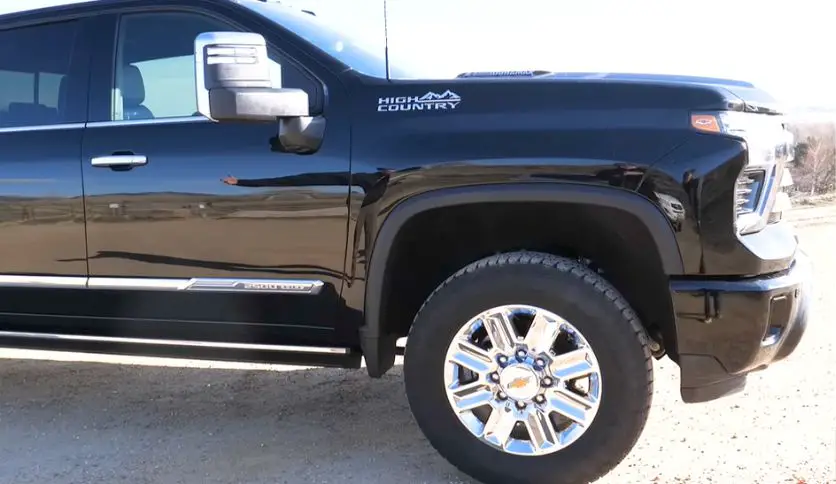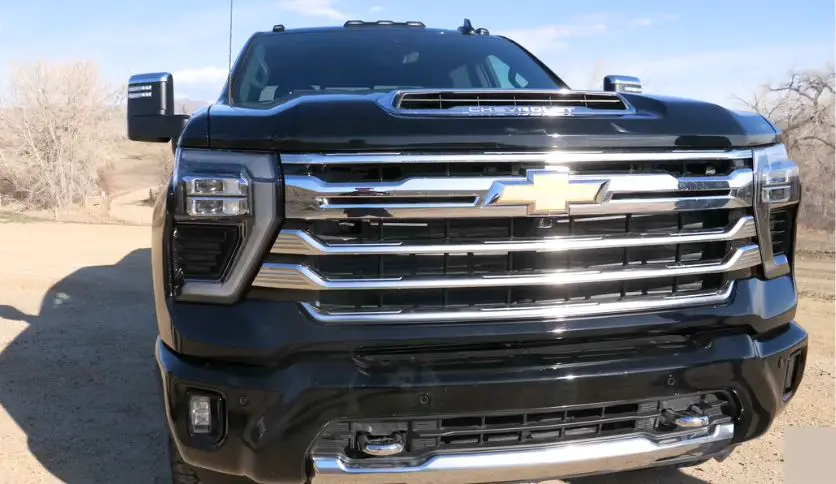Welcome to the world of heavy-duty trucks, where the Chevy 2500HD stands as a testament to power and reliability. At the heart of its four-wheel-drive system lies a component critical to its performance – the transfer case. This article is your guide to understanding the various transfer case models that have been paired with the Chevy 2500HD over the years, and how to choose the right one for your truck.
Contents
- 1 Understanding Transfer Cases
- 2 The Role of a Transfer Case
- 3 How Does a Transfer Case Work?
- 4 Key Differences Between Transfer Case Models
- 5 Identifying Your Chevy 2500HD Transfer Case
- 6 Maintenance and Troubleshooting
- 7 Upgrades and Modifications
- 8 Making the Right Choice
- 9 Replacement Cost For Chevy 2500HD Transfer Case
- 10 FAQs For Chevy 2500HD Transfer Case Models
- 11 Conclusion
Understanding Transfer Cases
Before we delve into the specifics, let’s clarify what a transfer case does. It’s the heart of a 4WD system, distributing power from the engine to the front and rear axles. Imagine it as the manager of a team, directing power where it’s needed most to ensure optimal performance and traction.
The Role of a Transfer Case
Imagine the transfer case as the quarterback in a football game. It calls the plays for where power should go. In technical terms, the transfer case is responsible for transferring the engine’s power to both the front and rear axles via the drive shafts. It’s the reason you can count on all four wheels when you need that extra traction on rough terrains or in tough driving conditions.
How Does a Transfer Case Work?
The transfer case sits snugly behind the transmission, receiving power from the engine and deciding where to send it. Inside, a complex arrangement of gears and chains (or sometimes belts) takes the engine’s output and splits it. Depending on the design and the mode selected by the driver, it can send power to the rear wheels, the front wheels, or both sets simultaneously.
Key Differences Between Transfer Case Models

Diving into the world of Chevy 2500HD transfer cases, particularly models like the NP261 and NP263, is akin to exploring the unique personalities of these mechanical marvels. Each model has its own set of characteristics that cater to different driving demands and preferences. Let’s explore these differences in detail.
Gear Ratios
The gear ratio in a transfer case is a critical factor that influences your truck’s performance. It’s the ratio of the number of turns the input shaft makes to one turn of the output shaft. This ratio determines how much torque is transmitted to the wheels.
- NP261: Known for its reliability, the NP261 typically features a gear ratio that balances fuel efficiency with performance. It’s designed for drivers who need a dependable transfer case for everyday driving with occasional heavy-duty use.
- NP263: The NP263, on the other hand, may offer a different gear ratio, optimized for heavier-duty applications. This model is often chosen for its ability to handle larger loads, making it a favorite for those who frequently tow or haul.
Operation Type
The type of operation is another significant aspect that sets transfer case models apart.
- Manual Operation: The NP261 is often a manually operated transfer case, requiring the driver to physically engage the system. This traditional style is favored by many for its direct control and simplicity.
- Electronic Shifting: The NP263, in contrast, is typically equipped with electronic shift capabilities. This modern approach allows for shifting between 2WD and 4WD with the push of a button, providing convenience and ease of use.
Durability and Lifespan
Durability is a hallmark of Chevy’s transfer cases, but some are built tougher than others.
- NP261: This model is constructed to offer solid performance under most conditions. It’s durable, but its lifespan can be influenced by how the truck is used—frequent heavy towing may necessitate more frequent maintenance.
- NP263: With enhanced materials and design features geared towards more rigorous use, the NP263 is often considered to have a longer lifespan under heavy-duty use. Its build quality is designed to withstand the additional stress of constant heavy loads.
Compatibility
Compatibility is crucial when selecting a transfer case. Not all models fit every year or version of the 2500HD.
- NP261: This transfer case may be found in earlier models of the 2500HD and is often compatible with a range of years and configurations.
- NP263: The NP263 might be more common in later models or those equipped with certain features. It’s essential to ensure that the transfer case you choose matches your truck’s specifications.
The Magic of Selectable Modes
Many transfer cases come with selectable modes. These modes can include:
- 2H (Two-Wheel Drive High Range): Ideal for normal road driving, this mode sends power to the rear wheels only, saving fuel and reducing wear on the 4WD components.
- 4H (Four-Wheel Drive High Range): This is the go-to mode for slippery or loose surface conditions at normal speeds, engaging all four wheels.
- 4L (Four-Wheel Drive Low Range): When the going gets tough, 4L is your best friend. It provides increased torque at lower speeds for serious off-roading or when you’re stuck and need that extra grunt to get out.
Identifying Your Chevy 2500HD Transfer Case
To find out Chevy 2500hd Transfer Case Problems, look for the identification tag typically located on the case itself. This tag provides a wealth of information, including the model number, which is vital for repairs or replacements.
Maintenance and Troubleshooting
Regular maintenance is key to the longevity of your transfer case. Keep an eye on the fluid levels and condition, and listen for unusual noises. Each model has its quirks, so familiarize yourself with the common issues of your specific transfer case to troubleshoot effectively.
Upgrades and Modifications
For those looking to enhance their truck’s performance, there are upgrades available for transfer cases. However, it’s important to consider the impact of these modifications on your truck’s warranty and performance. Always choose upgrades that align with your driving needs and consult with experts when in doubt.
Making the Right Choice
Selecting a transfer case is not just about the fit; it’s also about how you use your truck. Your driving habits, whether it’s daily commuting, heavy towing, or off-roading, will influence the best transfer case for your needs.
Replacement Cost For Chevy 2500HD Transfer Case
When considering the maintenance or upgrade of your Chevy 2500HD, one of the significant aspects to think about is the Replacement Cost for Chevy 2500HD Transfer Case. This cost can vary widely depending on whether you opt for a brand new unit, a remanufactured one, or a used part from a salvage yard. Factors such as the specific transfer case model, labor charges, and any additional parts required can also affect the overall expense. It’s essential to weigh the pros and cons of each option, as well as the long-term implications for your truck’s performance and reliability.
For a comprehensive understanding of what you might expect to invest in this crucial component’s replacement, delve into our detailed guide on the costs associated with replacing a transfer case in your Chevy 2500HD.
FAQs For Chevy 2500HD Transfer Case Models
Q: How often should I service my transfer case?
A: It’s recommended to check the transfer case fluid every 30,000 miles and replace it as needed.
Q: Can I switch from a manual to an electronic transfer case?
A: Yes, but it requires significant modifications. It’s best to consult with a professional for such a conversion.
Q: What’s the best transfer case for off-roading?
A: It depends on your specific needs, but generally, a transfer case with a lower gear ratio is preferred for off-road conditions.
Conclusion
Understanding the differences between Chevy 2500HD transfer case models equips you with the knowledge to make informed decisions about maintenance and upgrades. Use this guide as a resource, and always consult with professionals when you’re in doubt.

Hello, this is Wesley Shelton, currently working in a car restoration company for over 5 years. Before that, I was a worker at a small car repair shop. As I was a car freak from a young age and worked as a professional for over half a decade, I think I now know pretty much everything about every car and its parts. To establish my name as a professional and help others by sharing my knowledge, I’ve created this website, which I work on whenever I get free time. I hope you’ve enjoyed my informative blog!


